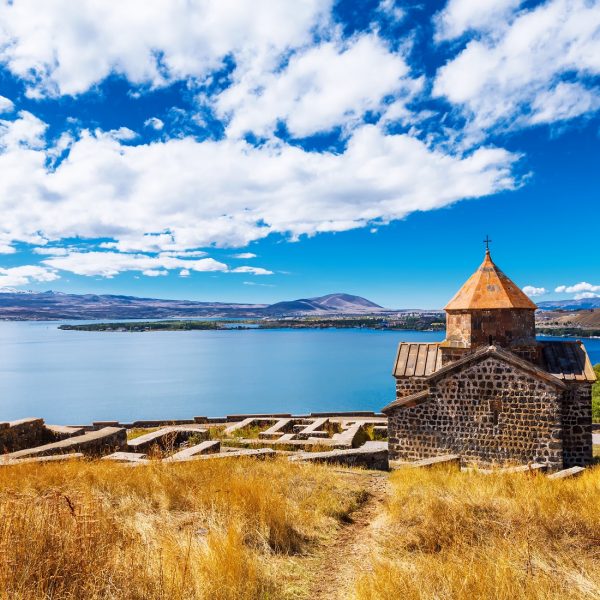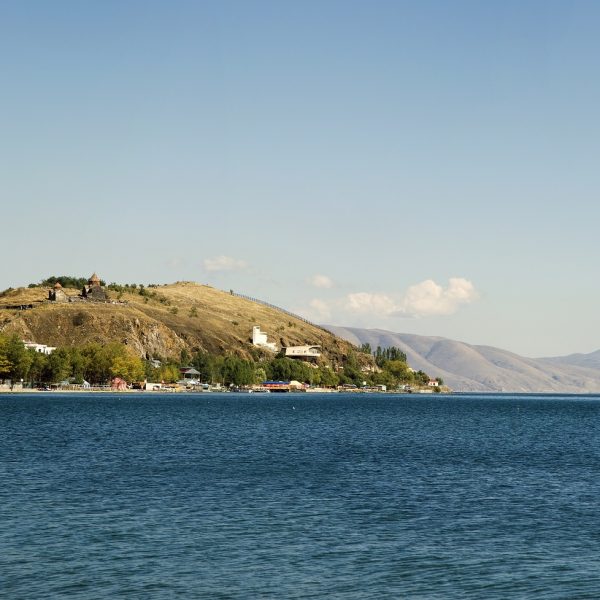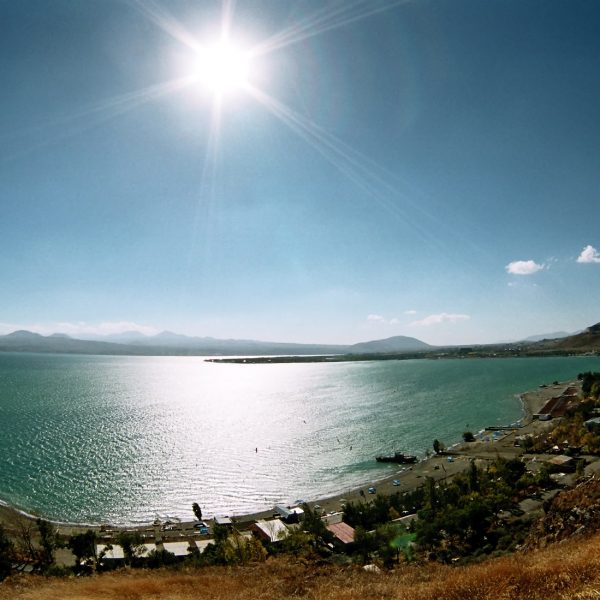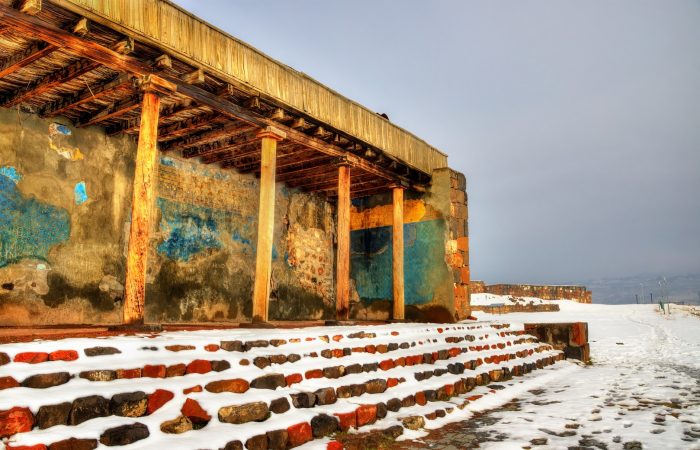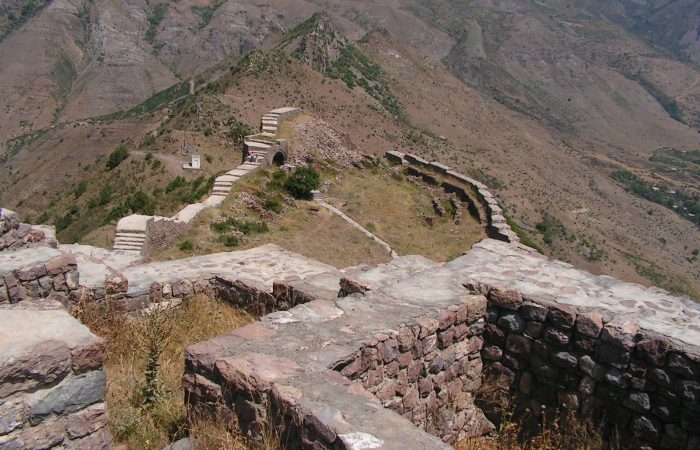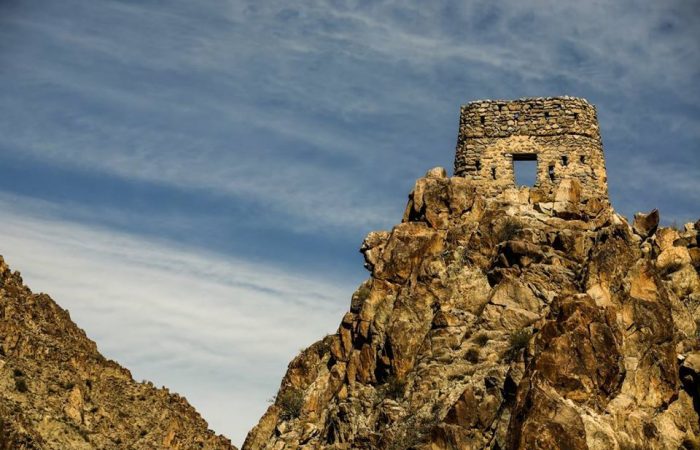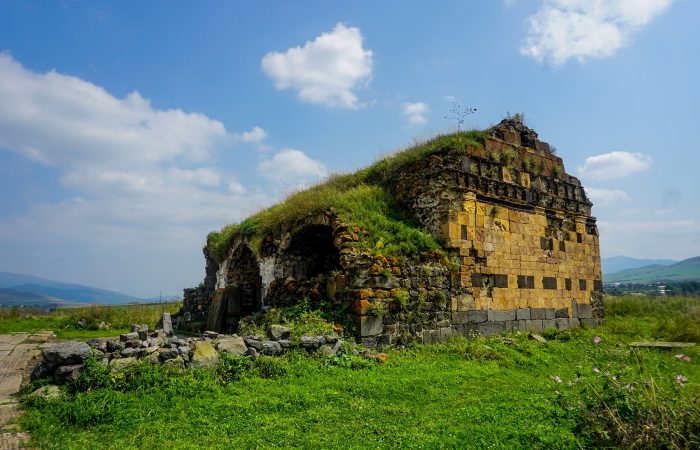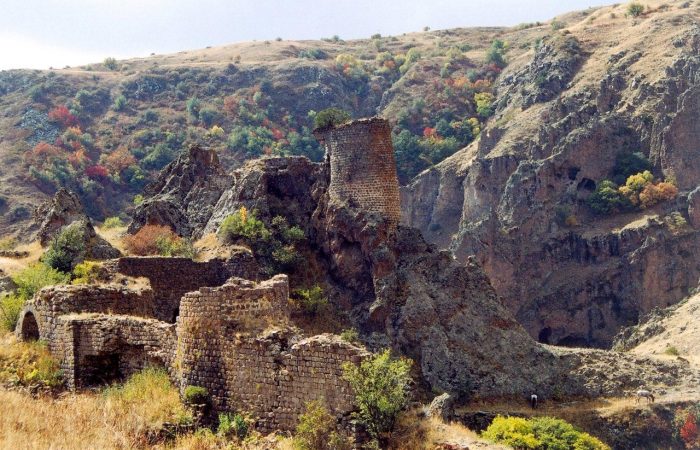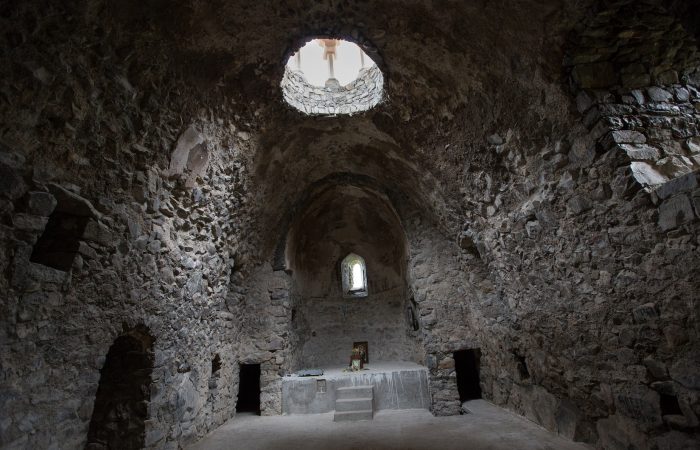Lake Sevan: General
Lake Sevan is located in Gegharkhounik Province, 60 kilometers to the north of capital Yerevan. It’s the greatest one in the Caucasus Region. Its significance is also conditioned by the fact that it provides fresh water and fresh water fish to the Transcaucasus region. In addition to that, it’s one of the freshwater high mountain lakes in Eurasia. Note that the lake’s basin makes up the one sixth of Armenia’s entire territory. Twenty-eight rivers and streams flow into the lake, and one river flows out of it. It’s River Hrazdan.
In the beginning of the 20th century Armenia became a Soviet Union member state and upon the decision of the Soviet Government the water of the lake was lowered and used for irrigation and hydroelectricity purposes. As a result, the island on which the beautiful Monastery of Sevanavank is situated converted into a peninsula. Recently, the Armenian Government came up with a plan to increase the water level. And the consequences are now clearly seen by the trees and close-to-shore constructions having appeared underwater.
Currently, the lake plays an enormous role in the country’s economy. Due to it, Armenians get low cost electricity. Besides, they are provided with fish, recreation and tourism. It’s also the main source of irrigation water. All this said, it should be only added that the role of this beautiful lake cannot be underestimated as it is of utmost importance to Armenia and the Armenian people.
Lake Sevan: Climate
The lake has a high mountain location. It means that the climate is cooler than in other areas. The average annual temperature makes up 5 degrees Celsius. In January the temperature might reach minus 6 degrees Celsius and go as high as 16 degrees Celsius in July.
In general, the weather is windy. The wind is especially mean in winter.
Lake Sevan: Major and Minor Sevans
The lake consists of Minor Sevan and Major Sevan. Minor Sevan is deeper, while Major Sevan is shallower. There is an apparent age difference between the two; the first is only 100,000 years old, while the second is one million years old.
Lake Sevan: Flora
The lake’s basin includes around 1600 species of vascular plants. Note that out of the 1600 species 48 are registered in the Red Data Book of Armenia. Six species are endemic. They are:
- Acantholimon gabrieljanae,
- Alyssum hajastanum,
- Astragalus shushaensis,
- Isotis arnoldiana,
- Isotis sevangensis,
- Ribes achurjani.
Compared with 1915 the lake’s water level has greatly decreased and those already dried areas were forested by alien species of plants. Among them are Pinus caucasica, Populus canadensis, Populus simoni, Caragana brevespina, Caragana trutex, Salix viminalis and Hippopae ramnoides.
Lake Sevan: Fauna
The lake’s fauna includes fishes, reptiles, amphibians, birds and mammals.
Fish – There are six species of fishes; two are endemic and two are registered in the Red Data Book of Armenia. Notably the most popular fish is ishkhan (trout), which means “Prince” in English and which is at the edge of extinction. On the whole, all native species are in decline. Among them are ishkhan, Sevan barbel and Sevan Koghak.
Amphibians – There are four species of amphibians. They are mostly noted in those places where there are small ponds, pools and puddles.
Reptiles – There are 18 species of reptiles. Grass snakes can be seen anywhere. Herpetofauna is more noted on the northeastern shore.
Birds – there are 210 species of birds out of which only one is endemic. The most commonly seen species include Eurasian coot, mallard and Armenian gull. During the October-December period the lake hosts migratory birds. It serves as a stop for such birds as great egret, mute swan and demoiselle crane. Still half a century ago the lake used to be an important breeding area, while now the role has been greatly reduced because of the decreased water level. Presently primarily migratory waterfowls consider it as a resting and wintering site.
Mammals – There are 36 species of mammals. The most commonly met ones are European hare, red fox, wolf and so on.
Lake Sevan: National Park
The park was established in 1978 and protects an area of 150,000 ha. It includes the lake and 24.800 ha of surrounding land. In 1993 it was designated as a Ramsar site (in case you don’t know, Ramsar sites are wetlands of international importance).
The national park is composed of three main zones – the core (reserve) zone, the recreation zone and the zone for economic use. While there is no any clear mapping or boundaries set between the recreation and economic zones, no activities except for researches are allowed in the reserve zone.
Lake Sevan: Getting There and Spending Time
The lake is not located far from Yerevan, and it will take more or less an hour to get there by car. If you take a taxi, then it will make around 5000-6000 Dram ($12-$14), in this regard, traveling with a group is more convenient. Another option is by a mini bus, which will cost you 600-800 Dram ($2 at most).
On the whole, people organize one or two day trips to the lake, usually in large groups. One of the main purposes to go there is not only to swim and lie in the hot sun, but also to have barbecue, perhaps one of the most favorite dishes in Armenia. But if barbecue doesn’t sound appealing to you (though I doubt it), you can definitely do with fruits, sandwiches and vegetables.

